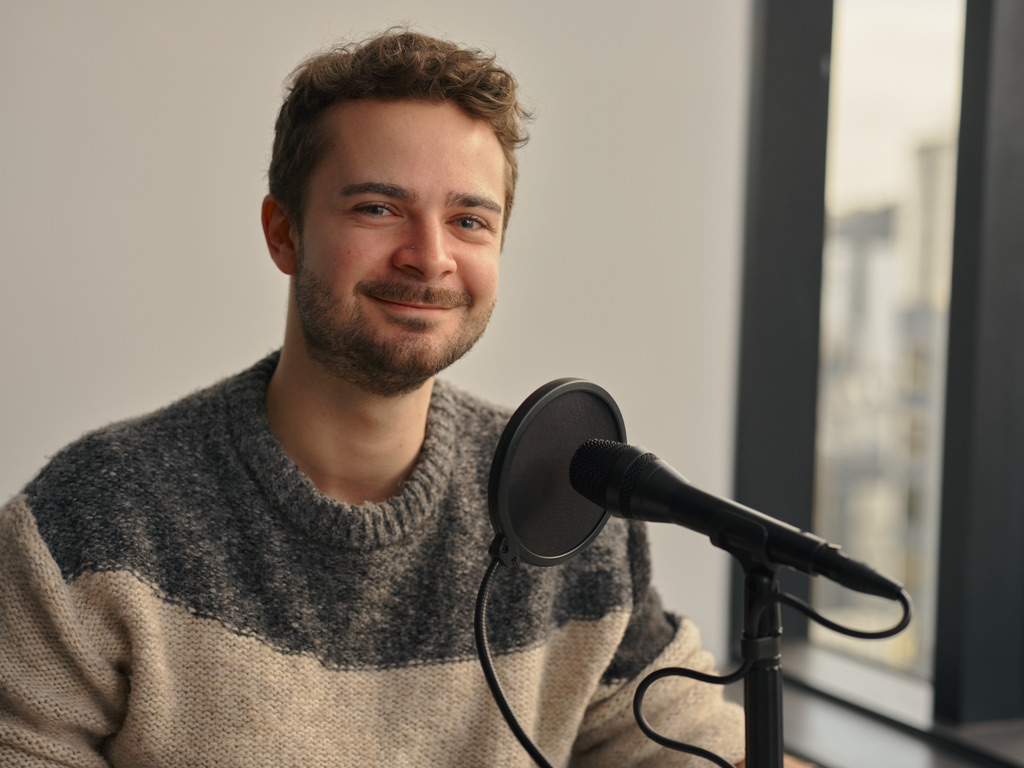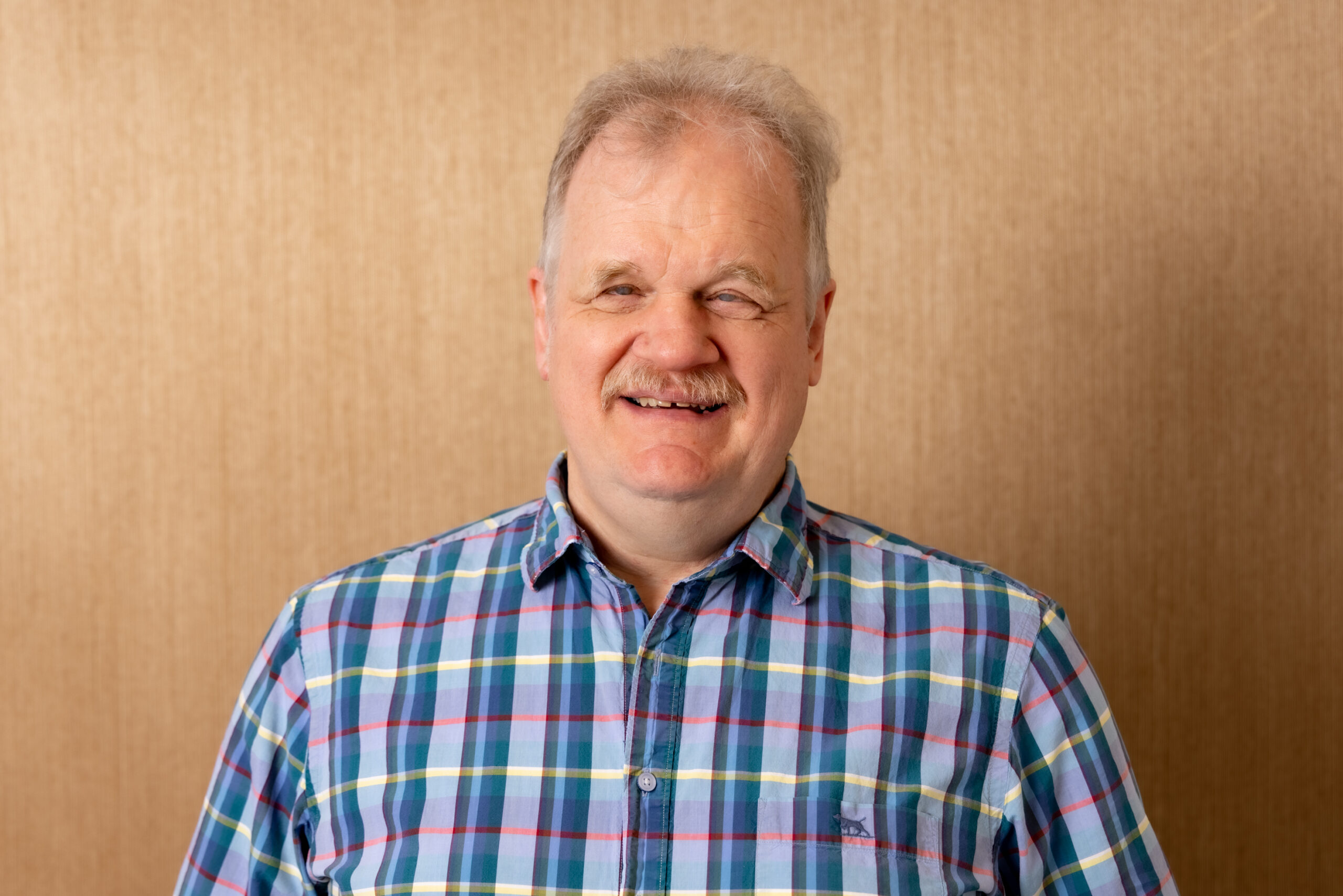Virginia Philp leads our small crew of audio describers. She overseas everything audio description: recruiting, training and managing the team, as well as ensuring we’re delivering our services to the best possible standard. Having been a part of Able throughout its entire lifetime, Virginia has a wealth of experience and knowledge on the ins-and-outs of audio description and Able, making her invaluable to the organisation – especially as she’s so generous with this expertise and time. Most people call her V.
Kia ora, V. When did you get your start with Able?
When I started, it was in March 2009. We were just known as TVNZ Captioning, because audio description (AD) didn’t exist. When AD was first introduced in 2011, the department changed to be TVNZ Access Services.
Tell me, what was it like right at the beginning of AD?
There was funding from NZ On Air to set up a pilot scheme, which gave limited funding for a certain amount of resource and time, and that enabled TVNZ to set up the technical aspects that they needed to do for AD. We started out by repurposing files – the first programmes that we worked on were Coronation Street and movies that we bought from our UK suppliers. Then, as things picked up, we started audio describing our own New Zealand content. The first series we did was called Nothing Trivial, and then in November of 2011 we started audio describing Shortland Street. And we have not stopped since.
That’s more recent than I expected.
Yes, we marked 10 years of audio description in 2021.
Do you remember how you learned to audio describe? I don’t imagine there was a V there at TVNZ to teach you.
The way we learned was from seeing what we were working with with the bought files for Coronation Street. We made observations about how this file has been audio described, how we could emulate that. We also had some training, flown in from Australia.
How many of you were there at the time?
Including me, I think there were four members of the team who were both captioners and audio describers. And it wasn’t until 2012 that we hired our first external-hired audio describer full-time, which was Lee Smith-Gibbons.
At what point were you guys able to expand your audio description capabilities?
Pre our big 2020 funding boost, so between 2013 and 2020, we were increasing very incrementally. And then, both with the massive funding injection, and then also I would say changing our AD software, and also being able to create a freelancer pool of audio describers – all those things combined led to an exponential growth. The 2020 funding boost meant that we weren’t cherry picking smaller projects to work on – we could do more, and the funding meant we could do it now.
What kind of person is most suited to becoming an audio describer?
It just so happens that we definitely have people in the AD team who perhaps have a performing arts background, are involved in acting, voice work, theatre work – they are people who know how to write and tell stories. Definitely people with a writing background, whether that be novels, publications, or even writing scripts with television. These are people who know what it takes to bring a story to life.
So you see it as a creative role?
It is, definitely. It is very creative, within some framework. And so you’ve got the ability to script things to a certain extent how you want to, and when it comes to the voicing, well, of course we don’t employ people to sound like robots and sound all the same, and so there’s an element of creativity there, too, where you’re going to bring your own personal touch.
Have you seen a growth in demand for commercial audio description?
Yes – I think there’s an element of just increased knowledge about audio description and what type of accessibility that provides. It’s not in the same realm as commercial caption work, but I think definitely if clients are looking to make sure all accessibility is covered for their piece of media, then they will know that audio description is part of that, especially if a New Zealand film was for release overseas. Overseas countries might have more comprehensive accessibility requirements that means audio description needs to be provided as well.
How do you feel about the fact that Able is about to hit double digits? Is it strange to look back and think about where it started?
Yes, definitely. I feel like it’s a huge achievement. It’s really satisfying for me because I’ve been involved all the way through, as I have with a handful of other colleagues as well. We’ve just grown in confidence so much as an organisation compared to its beginning – not knowing whether this fledging organisation was going to work, and what it was going to be like, and whether we were going to be able to take the best things from TVNZ. And it really was the absolute best thing that could have happened to us, to become a separate entity.
What do you hope for in its future?
I would love for Able to continue to be the wonderful workplace that it is. It’s not always about being bigger and doing more, but I like to focus on the way you go about achieving the work. I would like Able to keep going from strength to strength, no matter who the people are here that are working. For audio description, for me it would be to be able to adapt to whatever could be on the horizon. And we don’t necessarily know what that might be, because the media landscape is changing all the time, but being able to bring to fruition whatever is placed in front of us, whether that’s audio describing on more channels, or more platforms, and keeping on finessing the most high quality, efficient way of doing it.
And, finally, V – why do you want to stay on with Able after all these years?
I love working with broadcast media and I love the AD craft itself. It’s also very satisfying to work with a fantastic AD team – all people I have had a hand in hiring myself. Able has done so much for me over the years. It’s been a stable and welcoming workplace when I’ve needed it the most, and I want to continue to repay that favour.





